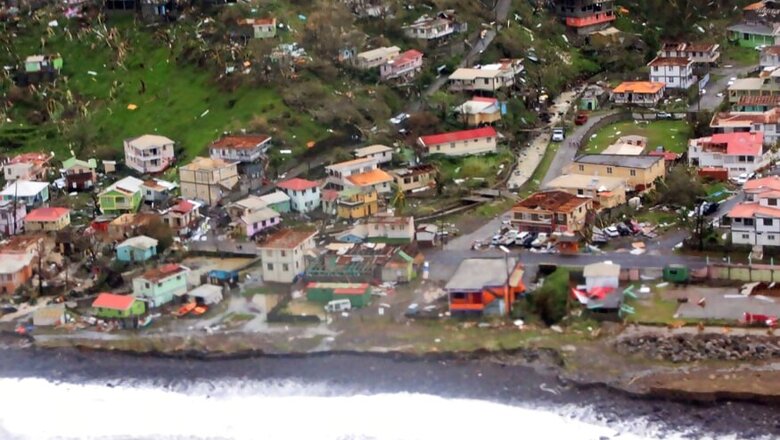
views
It's not just this year. The monster hurricanes Harvey, Irma, Maria, Jose and Lee that have raged across the Atlantic are contributing to what appears to be the most active period for major storms on record. And the busiest part of hurricane season isn't even over. An analysis of 167 years of federal storm data by The Associated Press found that no 30-year period in history has seen this many major hurricanes, this many days of those whoppers spinning in the Atlantic, or this much overall energy generated by those powerful storms.
Scientists caution it is too soon to draw conclusions from the data, and they don't say the intense activity confirms a trend. Storms in the distant past may have gone unnoticed, which could make earlier generations appear quieter than they were. Some scientists say past hurricane data is so weak that it's impossible to connect the recent activity to global warming. But more intense storms are what scientists expect to see as the planet's climate changes because warmer ocean water is fuel for hurricanes.
And they say it is important to better understand this current intense period to save lives and prevent worse future destruction. Georgia Tech climate scientist Kim Cobb said it would be "foolish" for policymakers to ignore the data. "We may not have as much data as we would like, but we have enough to aggressively invest in a variety of defences for coastal communities," she said in an email. "We face a triple threat of rising seas, stronger winds, and literally off-the-charts rainfall totals." The Atlantic hurricane season was more intense than normal in 2003, 2004, 2005, 2008, 2010, 2012 and 2016.
The 2005 season, which included Katrina, Rita and Wilma, was so active forecasters ran out of names for storms. Then came this year. Fueled by warmer than normal ocean temperatures and ideal wind conditions, September 2017 had more days with major hurricanes spinning and more overall hurricane energy expelled than any month on record, according to Colorado State University hurricane researcher Phil Klotzbach. Harvey spawned record rainfall. Irma had record high winds in the open Atlantic.
And Maria hit the US stronger than the earlier two. The Associated Press looked at all major hurricanes, not just the small fraction that hit the US, and grouped them into 30-year periods to mirror the 30-year cycles climate scientists use to understand how the climate is changing. The analysis found that in the period from 1988 to 2017: There have been 90 major hurricanes, an average of three a year. That's 48 percent more than during the previous 30 years. This hurricane season is at five and still counting.
Watch Video: Tech And Auto Show | EP14 | Apple iPhone 8, 8+, X, Isuzu D-Max & More


















Comments
0 comment